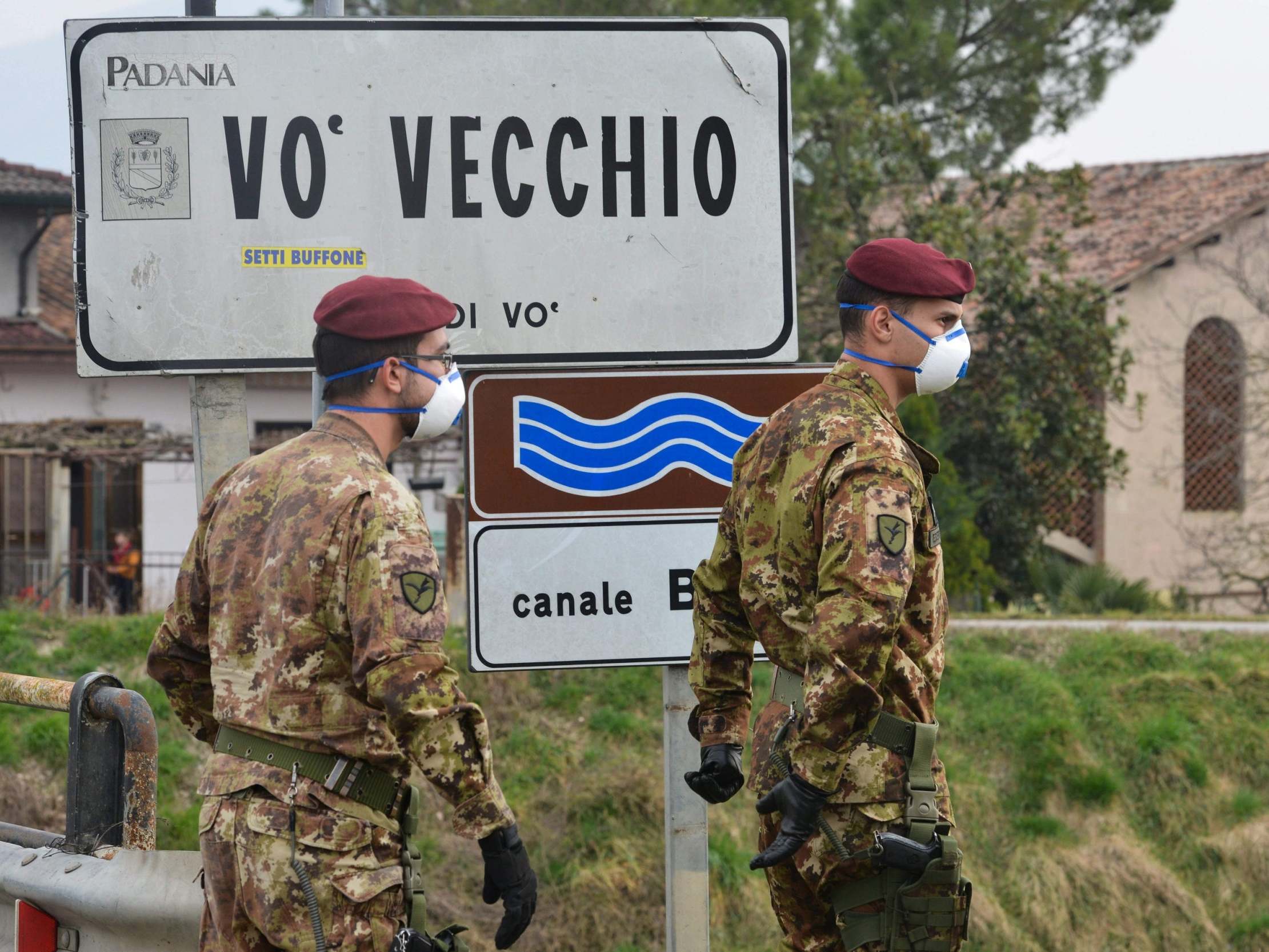Inside Italy’s ‘red zone’: Life under lockdown in Europe’s worst outbreak of coronavirus
‘Nobody knew Codogno, it’s a remote small town – now everyone thinks of us as lepers,’ one resident tells Alessio Perrone

As the new day broke, residents of the Italian town of Fombio, south of Milan, woke up to silence, closed bars – and quarantine.
“There’s a lot of silence, you can’t hear any cars outside. Everything has been closed since Saturday,” says Omar Salvatori, a 29-year-old resident and steelworker. “It’s like going out on Christmas while everyone else is still eating.”
Fombio is one of the 11 northern Italian towns in the “red zone”, the coronavirus outbreak area of northern Italy that has been under lockdown after the first cases of the illness were discovered last week.
Police man checkpoints as over 40 roadblocks cordon off access points to the towns. The area’s 50,000 residents face arrest and fines up to €300 (£250) if they try to leave.
Salvatori says there are now “huge queues outside supermarkets”, as stores only let in a limited number of people at a time and open just a few hours a day.
Over the weekend, Italy has become the worst-hit coronavirus hotspot in Europe. The country has over 200 contagions so far, mostly in the north, and seven people have died from the illness.
The Italian prime minister, Giuseppe Conte, said he was “surprised” by the increase in the number of cases, but that they could be due to more accurate checks.
Authorities in several northern regions have suspended schools and universities for a week, while four Serie A football matches were postponed.
In Lombardy, where over 170 cases were recorded, authorities closed museums and touristic sites and ordered bars and clubs to close between 6pm and 6am.
As the number of contagions grew, panic spread to Milan, with residents taking to supermarkets to buy food to stash at home, emptying shelves.
Families living on different sides of the cordons have also reportedly been split up, as authorities figure out how to deal with their cases.
One woman living in Casalpusterlengo, one of the 11 towns under lockdown, says that she was unable to visit her terminally ill husband in Lodi.
Of course you see photos of empty streets and supermarkets – but personally, that reassures me. It means we’re doing what we have to do
The hospital where her husband stays, she says, does not provide chemotherapy, and the lockdown means he is unable to go back home for treatment and to visit his wife and 10-year-old son. The woman, who asked not to be named, is now pleading authorities to bring him home or let her visit.
Social media users posted photos of empty streets in Fombio, Codogno and the other towns as residents did not go to work.
“Some people are panicking and not going out,” says Giorgio Merli, a 28-year-old resident of Codogno, the town of 16,000 where the first locally transmitted case was discovered.
Italian media reported that some grocery stores in Codogno were only letting in one customer at a time, while one pharmacy had shut its doors and served customers through a small window.
Merli works in Milan’s fashion district and says that up to 60 per cent of the customers are Chinese tourists.
He says that social interactions have since changed, even among people who are not panicking.

“We are calm but it’s a bit strange… We keep at an arm’s length when we speak to each other. We have been friends for 30 years but we keep a distance,” he says on the phone as he walked past a group of people forming a long queue outside a grocery store, while a journalist took photos.
“It’s not easy to meet up in the city centre and have a coffee – everything is closed,” he says, adding that many people were opting for walks in the countryside instead.
Measures in the outbreak towns are active until further notice, but most residents said they were calm and confident, and complained that Italian media was spreading panic by showing footage of deserted towns and queues outside supermarkets.
“I’m quite calm,” Letizia Bacciardi, a Codogno resident and mother of two told La7 television yesterday night. “The more we talk about it the more anxiety grows. There are some messages given by the media that are often a bit too alarmist.”
Merli, the 28-year-old Codogno resident who works in Milan’s fashion district, worried about the stigma that might stick his town for years. “A colleague told me that she said in a bar in Milan that she knew someone from Codogno and people went away from her,” he says.
“Nobody knew Codogno, it’s a remote small town in the Po Valley – now everyone thinks of us as lepers.”
Salvatori, the Fombio steelworker, was yet to go outside when he spoke to The Independent, but says that the media might have overreacted to events, photos and videos of the outbreak towns.
“Of course you see photos of empty streets and supermarkets – but personally, that reassures me,” he says. “It means we’re doing what we have to do.”
Join our commenting forum
Join thought-provoking conversations, follow other Independent readers and see their replies
Comments